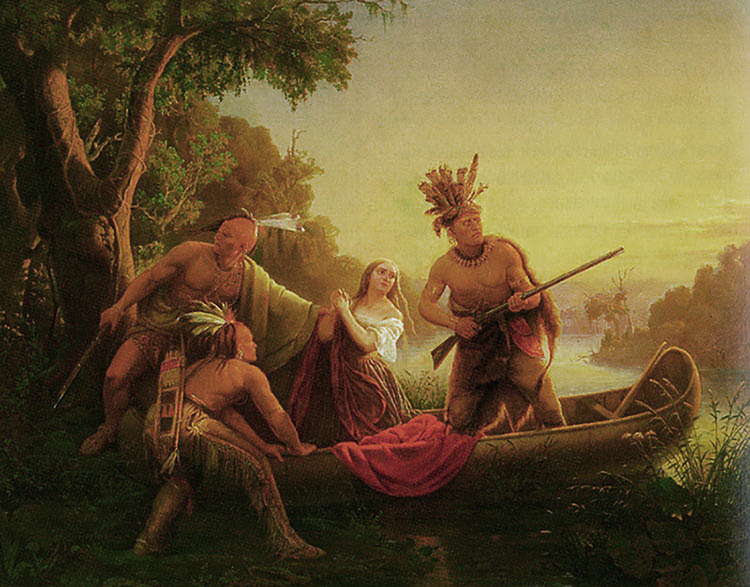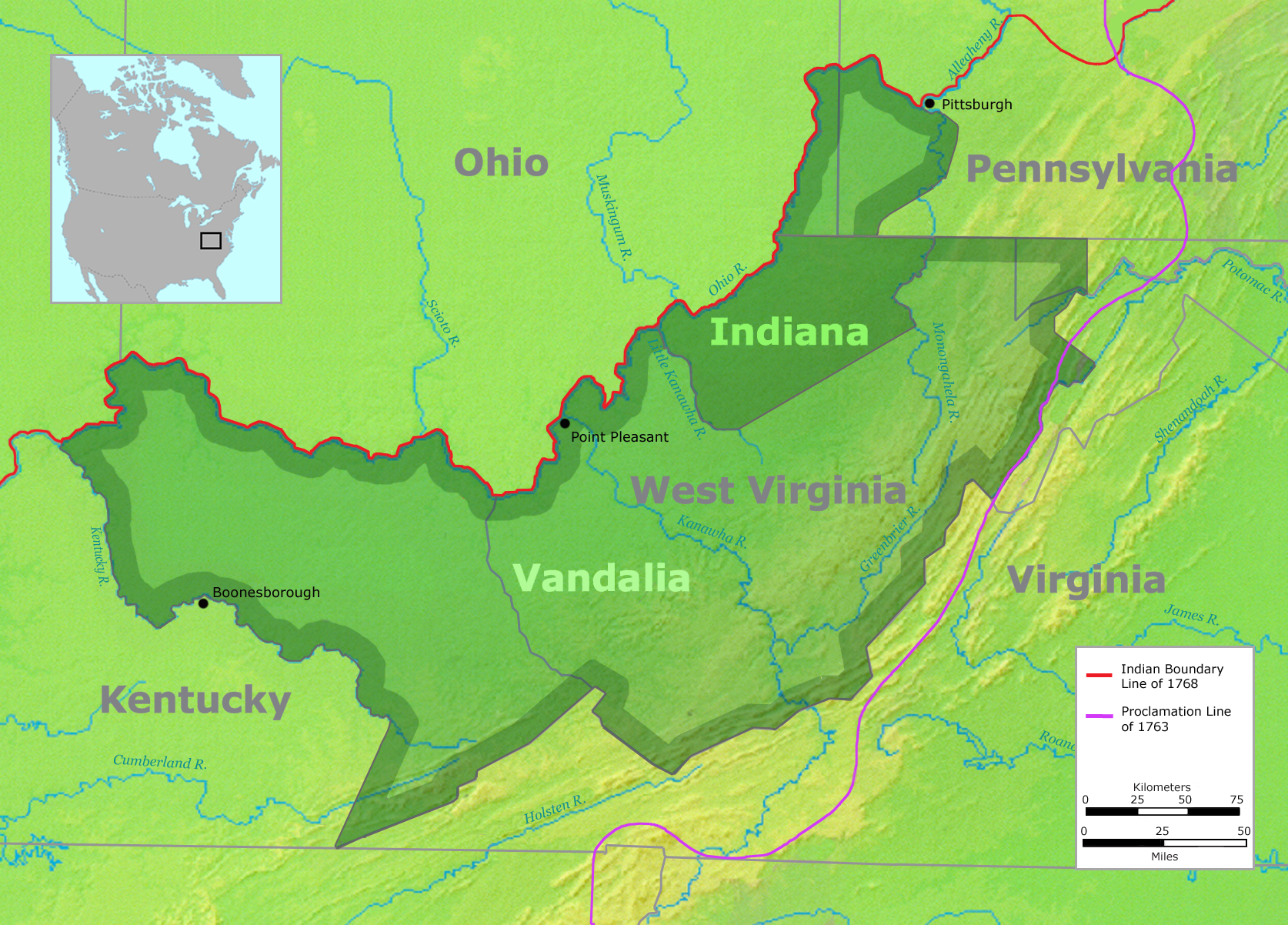|
James John Floyd
James John Floyd (1750–1783) was an early settler of St. Matthews, Kentucky and helped lay out Louisville. In Kentucky he served as a Colonel of the Kentucky Militia in which he participated in raids with George Rogers Clark and later became one of the first judges of Kentucky. Biography Virginia Floyd was born in 1750 in Amherst County, Virginia, to William and Abadiah (Davis) Floyd,Kleber, John E. ''The Encyclopedia of Louisville'' (University Press of Kentucky), page 300. descendants of Welsh immigrants. Family legend was that his mother was a descendant of the Powhatan chieftain Opchanacanough.Ambler, Charles Henry, ''The Life and Diary of John Floyd'' (Richmond Press), pages 13-30. Another family tradition maintains that her brother was Evan Davis, the grandfather of Jefferson Davis. In Virginia the Floyd family operated a farm and made a decent living there, but the younger Floyd knew opportunity to do better was in the west. At the age of 18 he married Matilda Burfor ... [...More Info...] [...Related Items...] OR: [Wikipedia] [Google] [Baidu] |
Amherst County, Virginia
Amherst County is a county, located in the Piedmont region and near the center of the Commonwealth of Virginia in the United States. The county is part of the Lynchburg Metropolitan Statistical Area, and its county seat is also named Amherst. Amherst County was created in 1761 out of Albemarle County, and it was named in honor of Lord Jeffery Amherst, the so-called "Conqueror of Canada". In 1807 as population increased, the county was reduced in size in order to form Nelson County. Tobacco was the major cash crop of the county during its early years. The labor-intensive crop was worked and processed by enslaved Africans and African Americans before the American Civil War. As of the 2020 census, the population of the county was 31,307. History Beginning thousands of years in the past, Native Americans were the first humans to populate the area. They hunted and fished mainly along the countless rivers and streams in the county. With the establishment of the Virginia Col ... [...More Info...] [...Related Items...] OR: [Wikipedia] [Google] [Baidu] |
Kanawha River
The Kanawha River ( ) is a tributary of the Ohio River, approximately 97 mi (156 km) long, in the U.S. state of West Virginia. The largest inland waterway in West Virginia, its valley has been a significant industrial region of the state since early in the 19th century. It is formed at the town of Gauley Bridge in northwestern Fayette County, approximately 35 mi (56 km) SE of Charleston, by the confluence of the New and Gauley rivers. It flows generally northwest, in a winding course on the unglaciated Allegheny Plateau, through Fayette, Kanawha, Putnam, and Mason counties, past the cities of Charleston and St. Albans, and numerous smaller communities. It joins the Ohio at Point Pleasant. Paleo-Indians, the earliest indigenous peoples, lived in the valley and the heights by 10,000 BC as evidenced by archaeological artifacts such as Clovis points. A succession of prehistoric cultures developed, with the Adena culture beginning the construction of ... [...More Info...] [...Related Items...] OR: [Wikipedia] [Google] [Baidu] |
Cumberland Gap
The Cumberland Gap is a pass through the long ridge of the Cumberland Mountains, within the Appalachian Mountains, near the junction of the U.S. states of Kentucky, Virginia, and Tennessee. It is famous in American colonial history for its role as a key passageway through the lower central Appalachians. Long used by Native American nations, the Cumberland Gap was brought to the attention of settlers in 1750 by Thomas Walker, a Virginia physician and explorer. The path was used by a team of frontiersmen led by Daniel Boone, making it accessible to pioneers who used it to journey into the western frontiers of Kentucky and Tennessee. It was an important part of the Wilderness Road and is now part of the Cumberland Gap National Historical Park. Geography The Cumberland Gap is one of many passes in the Appalachian Mountains, but the only one in the continuous Cumberland Mountain ridgeline. It lies within Cumberland Gap National Historical Park and is located on the bo ... [...More Info...] [...Related Items...] OR: [Wikipedia] [Google] [Baidu] |
Battle Of Point Pleasant
The Battle of Point Pleasant, also known as the Battle of Kanawha, was the only major action of Dunmore's War. It was fought on October 10, 1774, between the Virginia militia and Shawnee and Mingo warriors. Along the Ohio River near modern-day Point Pleasant, West Virginia, forces under the Shawnee chief Cornstalk attacked Virginia militiamen under Colonel Andrew Lewis, hoping to halt Lewis's advance into the Ohio Valley. After a long and furious battle, Cornstalk retreated. After the battle, the Virginians, along with a second force led by Lord Dunmore, the Royal Governor of Virginia, marched into the Ohio Valley and compelled Cornstalk to agree to a treaty, which ended the war. Preparations Colonel Andrew Lewis, in command of about 1,000 men, was part of a planned two-pronged Virginian invasion of the Ohio Valley. As Lewis's force made its way down the Kanawha River, guided by pioneering hunter/trapper Matthew Arbuckle Sr., Lewis anticipated linking up with another force ... [...More Info...] [...Related Items...] OR: [Wikipedia] [Google] [Baidu] |
Clinch Mountain
Clinch Mountain is a mountain ridge in the U.S. states of Tennessee and Virginia, lying in the ridge-and-valley section of the Appalachian Mountains. From its southern terminus at Kitts Point, which lies at the intersection of Knox, Union and Grainger counties near Blaine, Tennessee, it runs in a generally east-northeasterly direction to Garden Mountain near Burke's Garden, Virginia. It separates the Clinch River basin, to the north, and the Holston River basin, to the south. Geography Clinch Mountain is a long ridge, about in length. It runs generally southwest-northeast, with numerous curves. Its north-south extent is , and east-west . Due to its size it is sometimes called a mountain range or complex. The ridge includes the sub-range of Knob Mountain, as well as four summits above 4,000 feet (Beartown Mountain, Flattop Mountain, Morris Knob, and Chimney Rock Peak). For its entire length, Clinch Mountain has only one true gap through which the ridge is completely sliced i ... [...More Info...] [...Related Items...] OR: [Wikipedia] [Google] [Baidu] |
New Orleans
New Orleans ( , ,New Orleans . ; french: La Nouvelle-Orléans , es, Nueva Orleans) is a consolidated city-parish located along the in the southeastern region of the U.S. state of Louisiana. With a population of 383,997 according to the 2020 U.S. census, [...More Info...] [...Related Items...] OR: [Wikipedia] [Google] [Baidu] |
Michael Stoner
Michael may refer to: People * Michael (given name), a given name * Michael (surname), including a list of people with the surname Michael Given name "Michael" * Michael (archangel), ''first'' of God's archangels in the Jewish, Christian and Islamic religions * Michael (bishop elect), English 13th-century Bishop of Hereford elect * Michael (Khoroshy) (1885–1977), cleric of the Ukrainian Orthodox Church of Canada * Michael Donnellan (1915–1985), Irish-born London fashion designer, often referred to simply as "Michael" * Michael (footballer, born 1982), Brazilian footballer * Michael (footballer, born 1983), Brazilian footballer * Michael (footballer, born 1993), Brazilian footballer * Michael (footballer, born February 1996), Brazilian footballer * Michael (footballer, born March 1996), Brazilian footballer * Michael (footballer, born 1999), Brazilian footballer Rulers =Byzantine emperors= *Michael I Rangabe (d. 844), married the daughter of Emperor Nikephoros ... [...More Info...] [...Related Items...] OR: [Wikipedia] [Google] [Baidu] |
Daniel Boone
Daniel Boone (September 26, 1820) was an American pioneer and frontiersman whose exploits made him one of the first folk heroes of the United States. He became famous for his exploration and settlement of Kentucky, which was then beyond the western borders of the Thirteen Colonies. In 1775, Boone blazed the Wilderness Road through the Cumberland Gap and into Kentucky, in the face of resistance from American Indians, for whom Kentucky was a traditional hunting ground. He founded Boonesborough, one of the first English-speaking settlements west of the Appalachian Mountains. By the end of the 18th century, more than 200,000 people had entered Kentucky by following the route marked by Boone. Boone served as a militia officer during the Revolutionary War (1775–1783), which was fought in Kentucky primarily between American settlers and British-allied Indians. Boone was taken in by Shawnees in 1778 and adopted into the tribe, but he resigned and continued to help protect the ... [...More Info...] [...Related Items...] OR: [Wikipedia] [Google] [Baidu] |
William Russell (Virginia)
William Russell (1735 – January 14, 1793) was an army officer and a prominent settler of the southwestern region of the Virginia Colony. He led an early attempt to settle the "Kentuckee Territory" (then part of Virginia). He was a justice of Fincastle County, Virginia. During the American Revolutionary War he fought in the Battle of Yorktown. While a representative in the Virginia House of Delegates, Russell was noted for his stance opposing the 1785 State of Franklin petition for admittance into the United States. Personal life William Russell was educated at the College of William & Mary. Russell's first wife was Tabitha Adams, who died in 1776. His second wife, Elizabeth Henry —a sister of Patrick Henry —survived him by more than thirty years. Elizabeth was important in the early history of the Methodist Church in America. Many descendants of Russell lived in Russell and Scott Counties in Virginia. Frontiersman Russell led an early attempt to settle the area th ... [...More Info...] [...Related Items...] OR: [Wikipedia] [Google] [Baidu] |
Dunmore's War
Lord Dunmore's War—or Dunmore's War—was a 1774 conflict between the Colony of Virginia and the Shawnee and Mingo American Indian nations. The Governor of Virginia during the conflict was John Murray, 4th Earl of Dunmore—Lord Dunmore. He asked the Virginia House of Burgesses to declare a state of war with the Indian nations and call out the militia. The conflict resulted from escalating violence between white settlers, who, in accordance with previous treaties, were exploring and moving into land south of the Ohio River (modern West Virginia, southwestern Pennsylvania, and Kentucky), and Native Americans, who had rights to hunt there. As a result of incursions and successive attacks by settlers upon Indian lands, provoking Indian war bands to retaliate, war was declared "to pacify the hostile Indian war bands". The war ended soon after Virginia's victory in the Battle of Point Pleasant on October 10, 1774. As a result of this victory, the Colony of Virginia took away t ... [...More Info...] [...Related Items...] OR: [Wikipedia] [Google] [Baidu] |
Fort Pitt (Pennsylvania)
Fort Pitt was a fort built by British forces between 1759 and 1761 during the French and Indian War at the confluence of the Monongahela and Allegheny rivers, where the Ohio River is formed in western Pennsylvania (modern day Pittsburgh). It was near (but not directly on) the site of Fort Duquesne, a French colonial fort built in 1754 as tensions increased between Great Britain and France in both Europe and North America. The French destroyed Fort Duquesne in 1758 when they retreated under British attack. British colonial protection of this area ultimately led to the development of Pittsburgh and Allegheny County, Pennsylvania by British-American colonists and immigrants. Location and construction In April 1754, the French began building Fort Duquesne on the site of the small British Fort Prince George at the beginning of the French and Indian War (AKA Seven Years' War). The Braddock expedition, a 1755 British attempt to take Fort Duquesne, met with defeat at the Battl ... [...More Info...] [...Related Items...] OR: [Wikipedia] [Google] [Baidu] |







